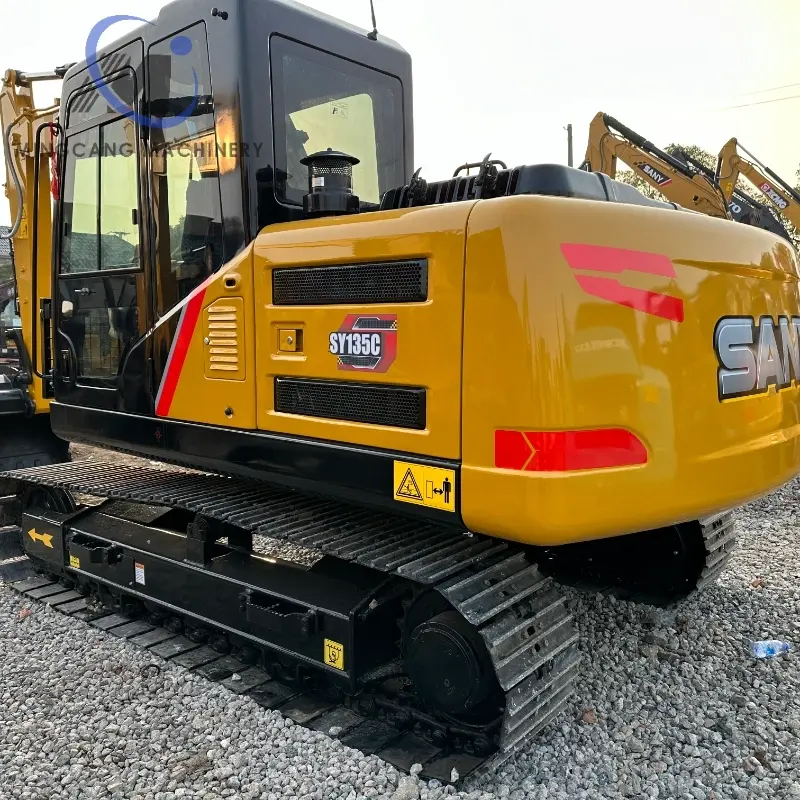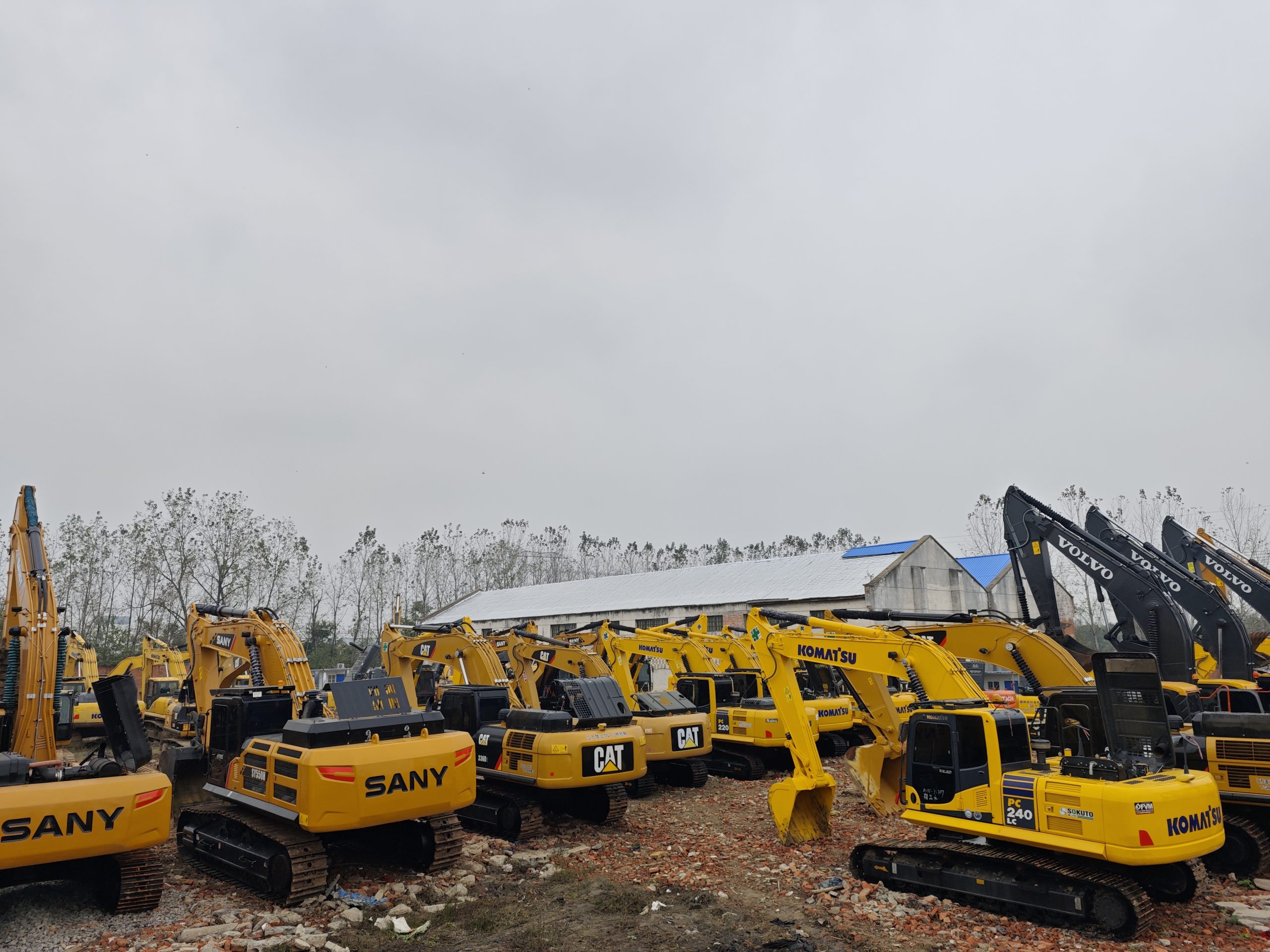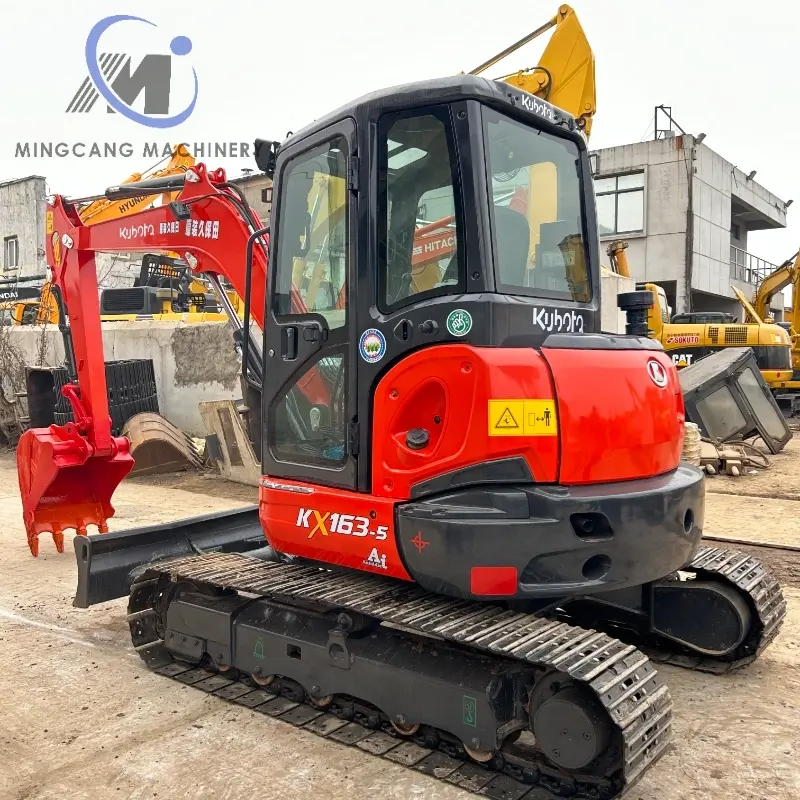Purchasing Second-hand Excavators from China: A Guide for Overseas Buyers
Release time: 2025-06-23
With the global increase in demand for cost-effective construction equipment, more and more overseas contractors and dealers are turning to China for second-hand excavators. As one of the world’s largest producers and consumers of construction machinery, China offers a wide range of second-hand excavators at significantly lower prices—typically 40% to 60% cheaper than new machines. This makes China an attractive market for global buyers.
However, purchasing second-hand excavators from China involves more than just buying and shipping—it requires careful consideration of equipment selection, quality inspection, and export documentation. Below are some key steps and tips to help you navigate the purchasing process.
In this guide, we’ll walk you through:
Why Choose to Buy Second-hand Excavators from China?
China is not only the world’s largest construction machinery manufacturing country but also has a well-developed second-hand equipment market. Here are the main reasons why you might choose to buy second-hand excavators from China:
- Cost Advantage: Second-hand excavators in China are 30%-70% cheaper than brand-new machines, offering great value for money.
- Good Condition of Equipment: Many machines have low working hours and well-documented maintenance history, ensuring they are in good working condition.
- Wide Selection of Brands and Models: The market offers a variety of brands, including well-known ones such as SANY, XCMG, Komatsu, Hitachi, and Caterpillar.
- Strong Supply Chain Support: Chinese suppliers offer comprehensive logistics, export documents, and after-sales services to assist buyers in completing the purchase and shipping process smoothly.

Types of Second-hand Excavators You Can Choose From
There is a wide range of second-hand excavators available in the Chinese market to meet various operational needs. The most common types include:
| Type | Example Models | Weight Class | Application |
|---|---|---|---|
| Mini Excavators | Kubota U35, Hitachi ZX50u | 1-6 tons | Urban construction, landscaping |
| Mid-size Excavators | SANY SY135C, Komastu PC160 | 7-15 tons | Road construction, foundation work |
| Large Excavators | Komatsu PC210, Doosan DX225 | 20+ tons | Quarries, heavy earthworks |
How to Inspect the Condition of Second-hand Excavators?
Even if you are located overseas, inspecting the condition of second-hand equipment is crucial. Most Chinese sellers provide the following information to help you assess the true condition of the equipment:
- Photos and Videos of the Equipment: Ask the seller to provide detailed photos, especially of critical areas like the undercarriage, hydraulic system, engine, and cabin.
- Working Videos and Start-up Tests: Request videos of the machine starting up to check for unusual smoke, noise, or starting issues.
- Work Hours and Maintenance Records: Ensure the seller provides the machine’s work hours and maintenance history to assess its usage.
Key areas to check include:
- The condition of the boom and arm, ensuring no welding or damage.
- The wear of the tracks and the condition of the sprockets.
- Leakage from hydraulic cylinders.
- The functionality of the cabin’s electronics and control systems.
Export Process: Step-by-Step Guide
From initial inquiries to equipment delivery, the export process generally follows these steps:
- Product Inquiry and Selection
Provide the supplier with your desired brand, model, age, operating hours, destination, and any certification requirements (such as CE, EPA), to confirm the availability and final price of the equipment. - Machine Confirmation and Deposit Payment
After the supplier provides detailed photos, videos, and inspection reports, confirm the machine’s condition, and pay a deposit of 30%-50% of the total cost. - Payment and Documentation Preparation
Once the final payment is made, the supplier will prepare the necessary documents such as invoices, packing lists, bills of lading, export customs declaration, and any required certifications (e.g., CE, EPA). - Shipping and Delivery
Excavator transportation typically involves one of two methods:- Roll-on/Roll-off (RoRo) Ships: For large machines, the equipment is driven directly onto the ship for transport.
- Container Shipping: For medium and small machines, the equipment is packed into 20ft or 40ft containers for sea transport.
Common Mistakes and How to Avoid Them
- Neglecting to Inspect the Machine Thoroughly
- How to Avoid: Always ask the seller for video inspections or arrange for a third-party on-site inspection to ensure the equipment’s condition matches your expectations.
- Not Understanding Import Regulations and Certification Requirements
- How to Avoid: Make sure you are aware of the import regulations for equipment in your target market, especially regarding emission standards and certifications such as CE and EPA.
- Choosing Based Solely on Price
- How to Avoid: While cheaper machines may seem like a good deal, they often carry hidden risks. Ensure the seller has a good reputation, and that the machine’s history and condition are thoroughly checked.
- Overlooking Additional Costs for Shipping and Taxes
- How to Avoid: Confirm all related costs with the logistics company or agent in advance to avoid unexpected expenses.
Ready to Purchase? We Can Help!
As an experienced used construction equipment exporter, Mingcang have helped hundreds of overseas buyers successfully purchase second-hand excavators from China. Our services include:
- Providing real-time video inspections to ensure the equipment is in the expected condition.
- Offering professional guidance throughout the export process to ensure a smooth transaction.
- Providing competitive prices for reliable equipment.
If you’re ready to make a purchase, feel free to contact us. We’re here to offer you the most professional services!


